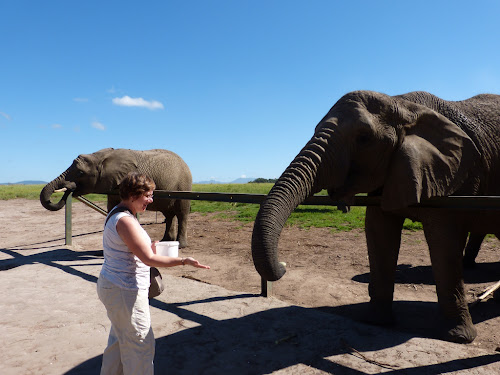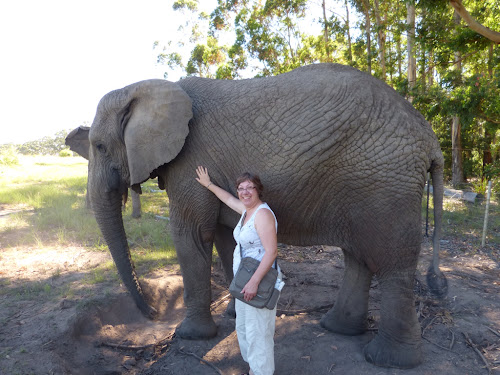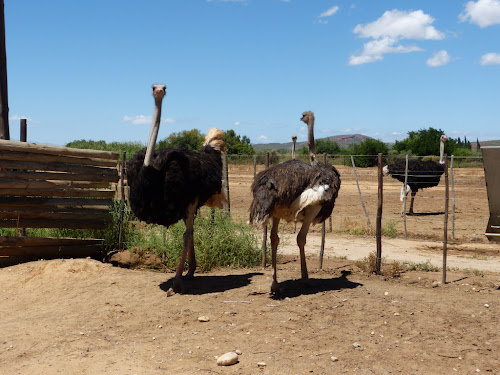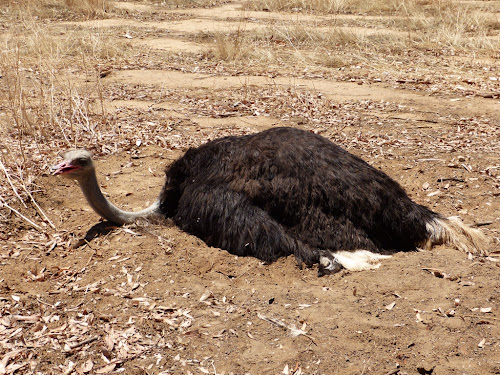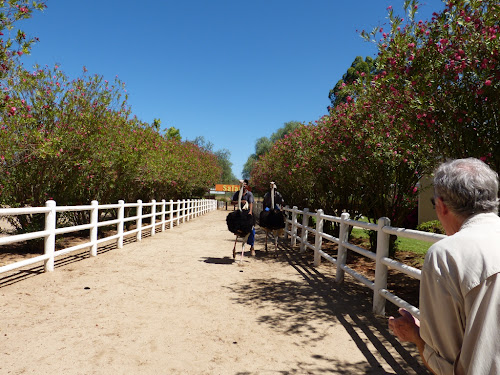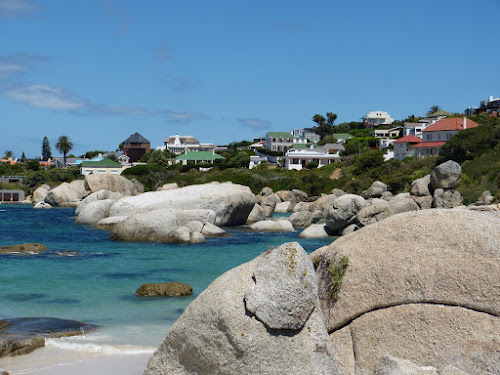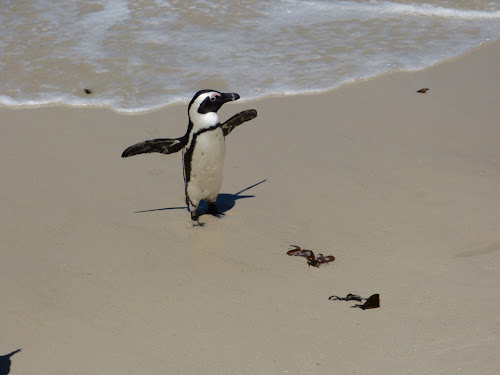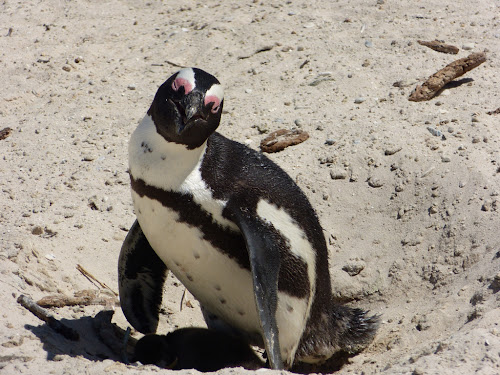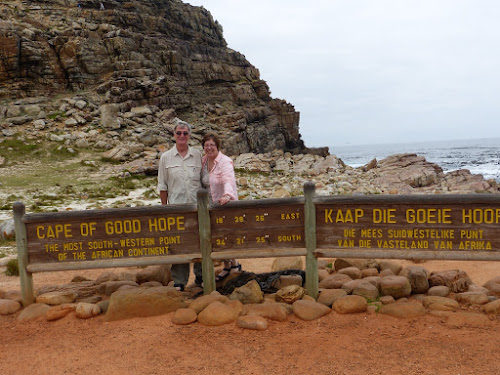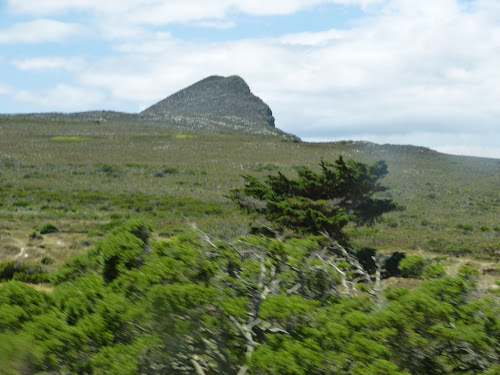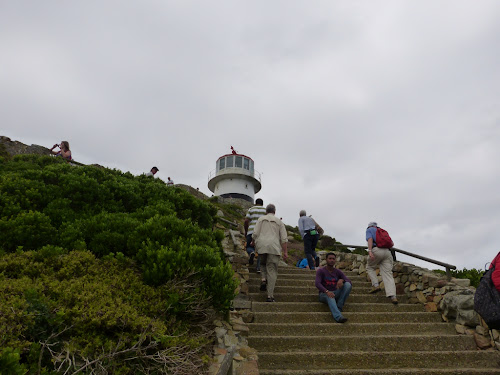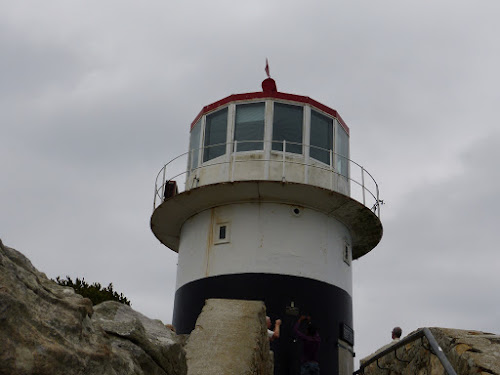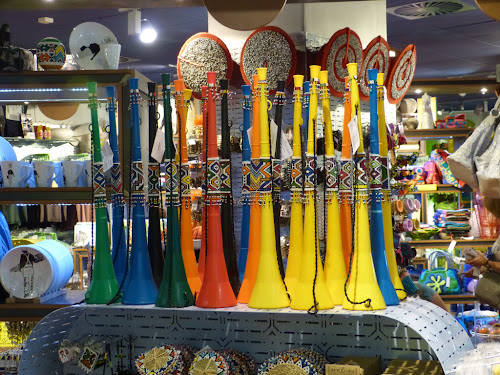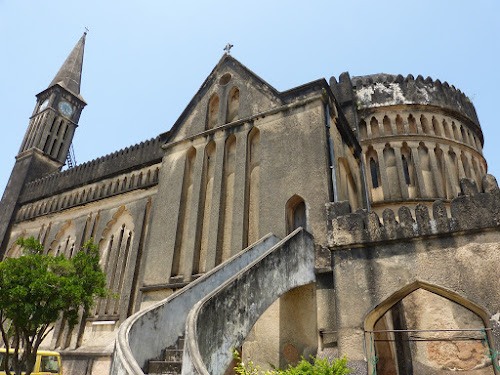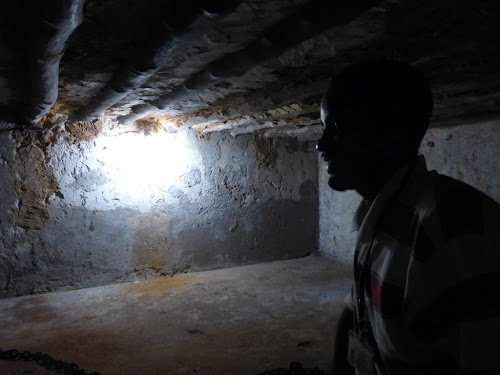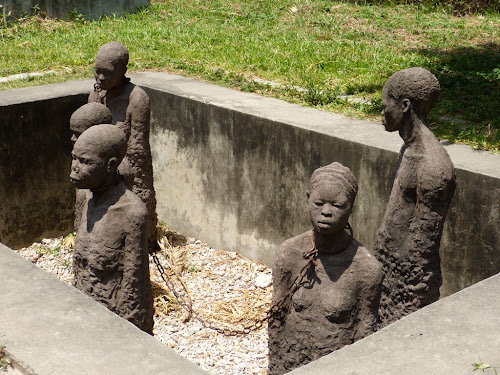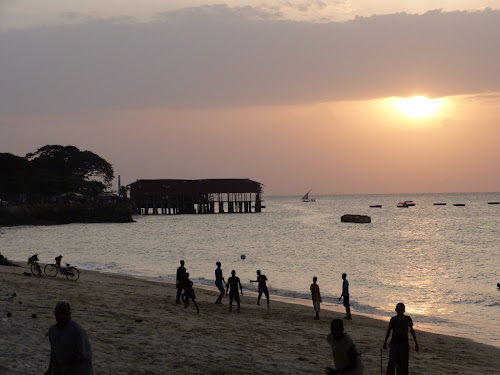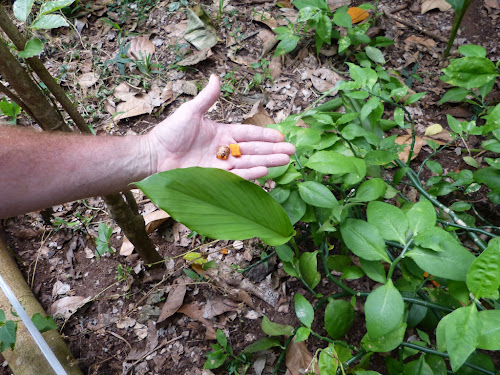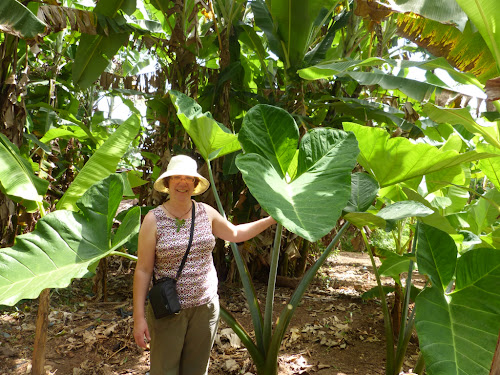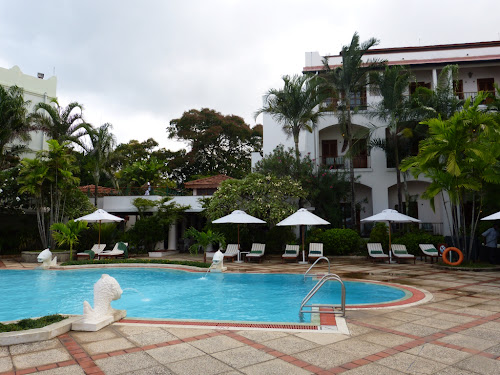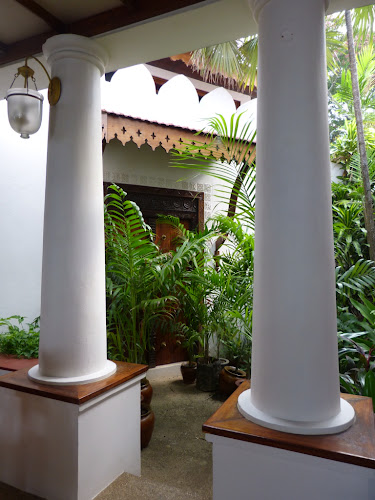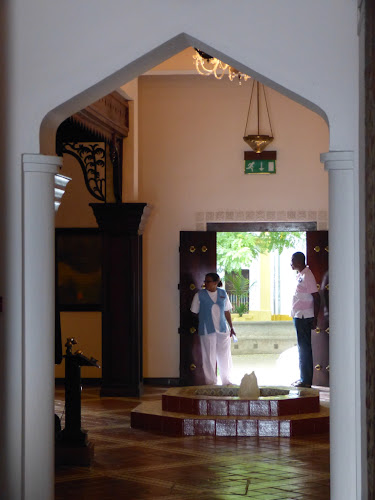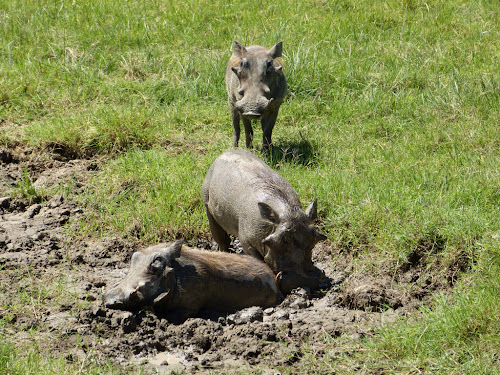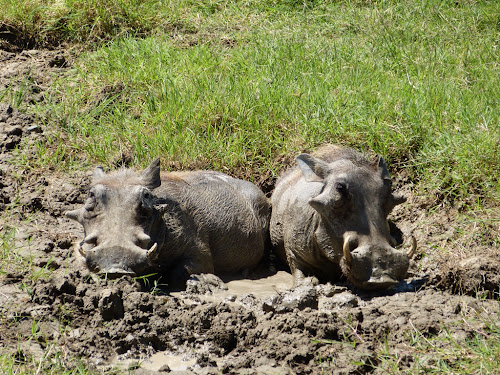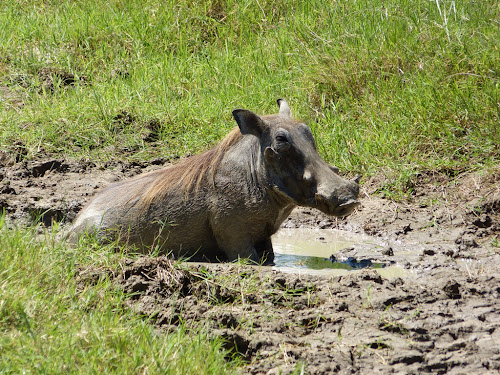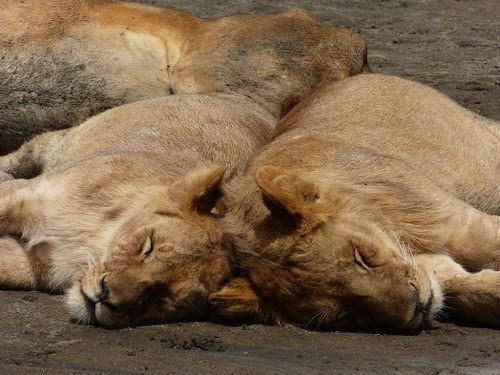Travelling the Garden Route from the lovely nautical town of Knysna (pronounced "NYSE-na"), we went to the Knysna Elephant Reserve for a morning. There was a time when a wild herd of elephants lived in the Knysna Forest, but they were poached so heavily that there are possibly just three free-roaming elephants left. This terrible indictment of our carelessness and greed prompted the establishment of the reserve we visited. Orphaned elephants gathered from South Africa, Zimbabwe and elsewhere now live peacefully on the reserve. There are 12 animals currently at the park. They are established in a family group with a matriarch, aunts and juveniles who are supported, protected and mentored.
As a private enterprise, the reserve is self-sustaining; the elephants are supported by visitor fees. You pay for entry and for fruit and vegetables to feed the elephants. We were driven out into the wide grassland by tractor and there, without any fences or barriers to separate us, we met the elephants. With guidance from the elephant handlers, we fed the elephants.
Then we walked with them, touched them and watched them at close range. The elephants have been trained to manage around people, to stop and stand as they quietly graze and to let people touch them.
They are absolutely huge at close range ...
We loved watching how they would crop the grass by grabbing a "hank" in their trunk and then glide their front foot sideways to break off the grass, Only the young ones seemed to do this.
And here's one peeling bark from a stick ... At very close range.
We had a peak in the stable where the elephants are housed at night to protect them. We were told that each animal knows its stall and walks in on their own. There was a small loft above the stable area which people can rent for a "sleepover" with the elephants. It would be fun, although I have to admit, elephant manure is every bit as fragrant as horse manure. And you should have see the size of the manure pile behind the stable!
As a photo opportunity, it was amazing. Walking with the Knysna elephants was one of the most peaceful, delightful animal interactions I've ever had.


